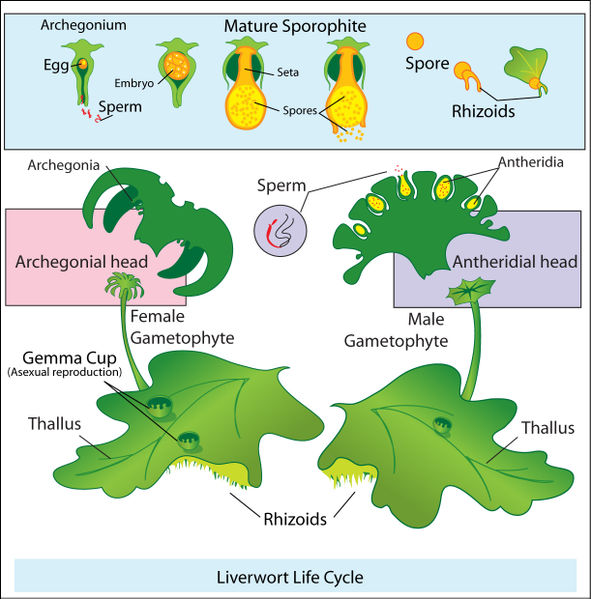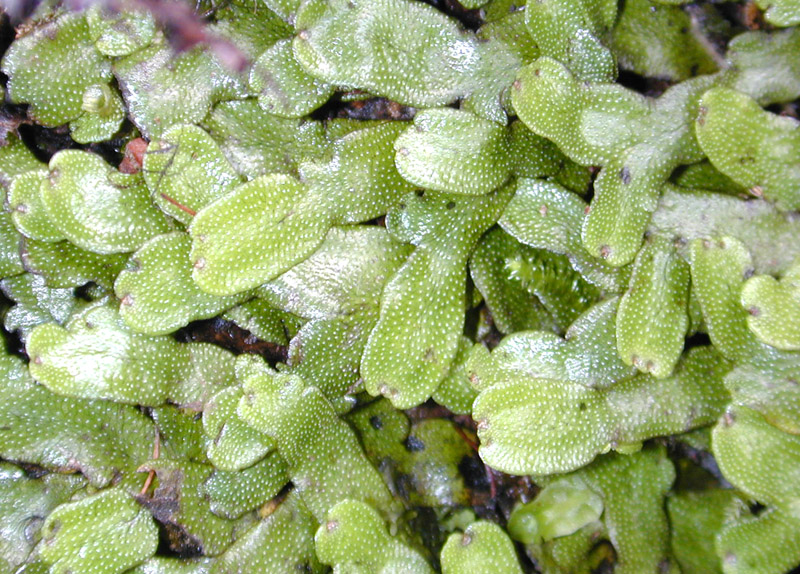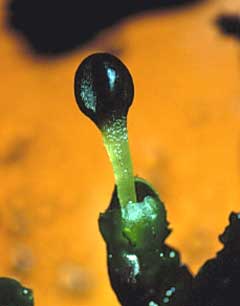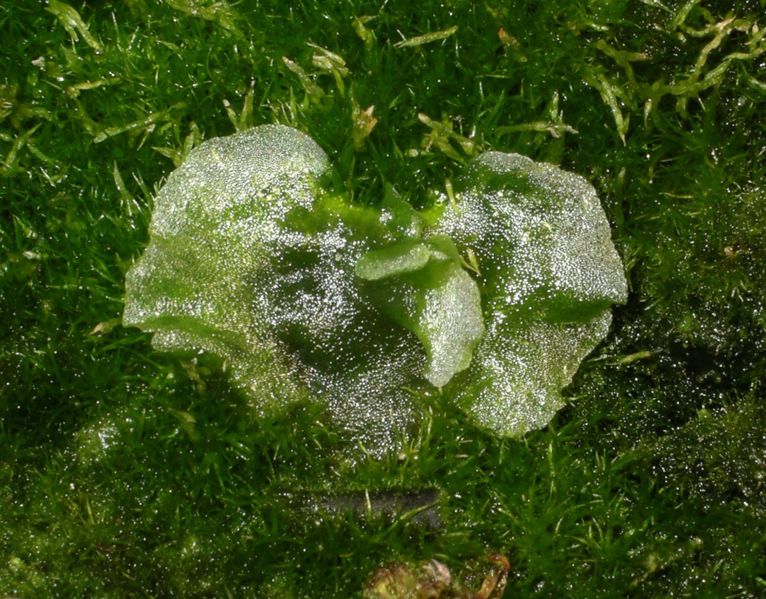Alteration of Generation
The Alternation of phases (or generations) describes the life cycle of plants, fungi and protists. A multicellular diploid phase alternates with a multicellular haploid phase. The term can be confusing for people familiar only with the life cycle of a typical animal. A more understandable name would be "alternation of phases of a single generation" because we usually consider a generation of a species to encompass one complete life cycle. The life cycle of organisms with "alternation of generations" is characterized by each phase consisting of one of two distinct organisms: a gametophyte (thallus (tissue) or plant), which is genetically haploid, and a sporophyte (thallus or plant), which is genetically diploid. A haploid plant of the gametophyte generation produces gametes by mitosis. Two gametes (originating from different organisms of the same species or from the same organism) combine to produce a zygote, which develops into a diploid plant of the sporophyte generation. This sporophyte produces spores by meiosis, which germinate and develop into a gametophyte of the next generation. This cycle, from gametophyte to gametophyte, is the way in which all land plants and many algae undergo sexual reproduction.Contents
» Distinctions» Fungi
» Protists
» Plants
» Non-vascular plants
» Vascular plants
» See also
» References
Distinctions

Diagram of alternation of generations in liverworts.

A liverwort gametophyte

A liverwort sporophyte.

Diagram of alternation of generations in ferns.

A gametophyte (prothallus) of Dicksonia sp.

A sporophyte of Dicksonia antarctica.

The underside of a Dicksonia antarctica frond showing the sori, or spore-producing structures.
All plants have diploid sporophyte and haploid gametophyte stages that are multicellular, and the differences between plant groups are in the relative sizes, forms, and trophic abilities of the gametophyte or sporophyte forms, as well as the level of differentiation in the gametophytes. An example would be comparing pollen and ovules to bisexual gametophyte thalli. Both approaches are discussed in this article.
Life cycles in which there is no multicellular diploid phase are referred to as haplontic. Life cycles with alternating haploid and diploid phases are diplohaplontic, but the equivalent terms diplobiontic, haplodiplontic, or dibiontic are also in use. Two main types of diplohaplontic (alternating) life-cycles are recognized: if the sporophyte and the gametophyte generations are more or less identical in form, the life cycle is said to be isomorphic, meaning "same form". If the generations have very different morphology, the life cycle is called heteromorphic meaning "different forms".
Heterogamy is a term used to describe alternation between parthenogenic and sexually reproductive phases that occurs in some animals. Although conceptually similar to "alternation of generations", the genetics of heterogamy is significantly different.
Fungi
Fungal mycelia are typically haploid. When mycelia of different mating types meet, they produce two multinucleate ball-shaped cells, which join via a "mating bridge". Nuclei move from one mycelium into the other, forming a heterokaryon (meaning "different nuclei"). This process is called plasmogamy. Actual fusion to form diploid nuclei is called karyogamy, and may not occur until sporangia are formed. Karogamy produces a diploid zygote, which is a short-lived sporophyte that soon undergoes meiosis to form haploid spores. When the spores germinate, they develop into new mycelia.Protists
Some protists undergo an alternation of generations, including the slime molds, foraminifera, and many marine algae.The life cycle of slime molds is very similar to that of fungi. Haploid spores germinate to form swarm cells or myxamoebae. These fuse in a process referred to as plasmogamy and karyogamy to form a diploid zygote. The zygote develops into a plasmodium, and the mature plasmodium produces, depending on the species, one to many fruiting bodies containing haploid spores.
Foraminifera undergo a heteromorphic alternation of generations between haploid gamont and diploid agamont phases. The single-celled haploid organism is typically much larger than the diploid organism.
Alternation of generations occurs in almost all marine algae. In most red algae, many green algae, and a few brown algae, the phases are isomorphic and free-living. Some species of red algae have a complex triphasic alternation of generations. Kelp are an example of a brown alga with a heteromorphic alternation of generations. Species from the genus Laminaria have a large sporophytic thallus that produces haploid spores which germinate to produce free-living microscopic male and female gametophytes.
Plants
Non-vascular plants
Vascular plants
Ferns and their allies, including clubmoss and horsetails, reproduce via an alternation of generations. The conspicuous plant observed in the field is the diploid sporophyte. This plant creates by meiosis single-celled haploid spores which are shed and dispersed by the wind (or in some cases, by floating on water). If conditions are right, a spore will germinate and grow into a rather inconspicuous plant body called a prothallus. The haploid prothallus does not resemble the sporophyte, and as such ferns and their allies have a heteromorphic alternation of generations. The prothallus is short-lived, but carries out sexual reproduction, producing the diploid zygote that then grows out of the prothallus as the sporophyte.See also
- Evolutionary history of plants: Evolutionary origin of the alternation of phases
References
- Stewart, W.N. and Rothwell, G.W. 1993. Paleobotany and the evolution of plants, Second edition. Cambridge University Press, Cambridge, UK.
- Taylor, T.N.; et al. (2005). "Life history biology of early land plants: Understanding the gametophyte phase". Proceedings of the National Academy of Sciences 102: 5892–5897.





